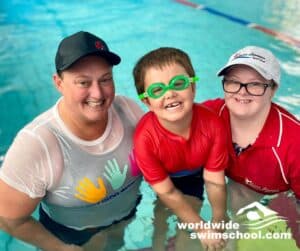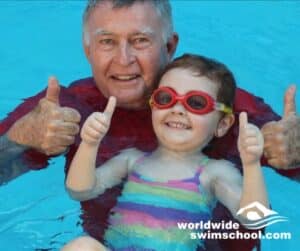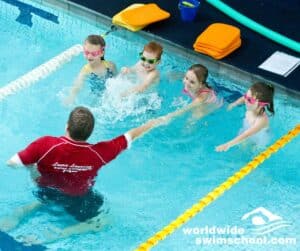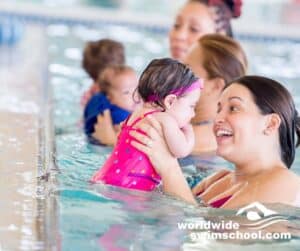These simple floating skills, established early, will form the child’s base for learning to swim and stroke development. They must master it before trying more complex swimming skills. Therefore, children should learn to relax and float independently on their front and back for up to ten seconds. Once you introduce propulsive patterns, the beginner swimmer will relax.
Ensuring Safety for Beginner Swimmers
Having a defined class area which is roped off is important for the safety of your class. This will ensure that you can keep your group together, for example. As well as avoid students wandering outside of your supervision. However, it is not necessary to have a large teaching space, particularly with beginner students. In addition, when taking inexperienced swimmers into deep water.
Experienced teachers will set up a confined area which gives them good supervision of the class. Overall, they will have the ability to move easily and quickly if they need to respond to their student in trouble.
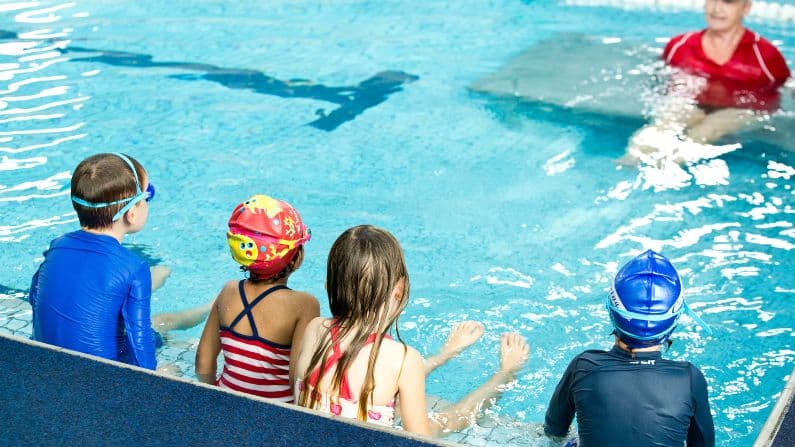
From Floating to Stroke Development
We as teachers must remember the importance of progressively building swimming skills to develop a relaxed and natural stroke which will last a lifetime. Good stroke develop requires perfecting a perfect streamline body position. Teachers are reminded that this position in the early learning stages is not very stable for beginners.
Beginners may need to perfect their balance and body position in the water by floating with a kickboard then floating with a wider arm position to assist in buoyancy before building more streamline position. Remember, floating is the basis of all learn-to-swim and should be a consistent part of any lesson plan.
Ensuring Progress in your Beginner Swimmers:
- Commit to your swimming lessons - Frequently changing teachers can be detrimental to beginner swimmers. Just as they gain trust in one teacher, another is introduced to them.
- Use routines and familiar surrounds & situations - Following a similar lesson plan from week to week while gradually building on skills will help to progress students faster.
- Plan lessons that keep your students busy and active so that they don’t get too cold in the pool - Beginner swimmers often feel the cold sooner than those students who are able to swim as they are less active.
- Maintaining an ideal water temperature of 30-32 degrees Celsius is ideal for beginners. Alternatively, begin the lesson with land drills or water safety activities to break up the duration of time in the water.
Children are often reluctant to swim to an adult. This can sometimes be remedied by having the child swim to the pool’s edge or a ledge. They are more relaxed swimming to a solid object because they know it won’t move.
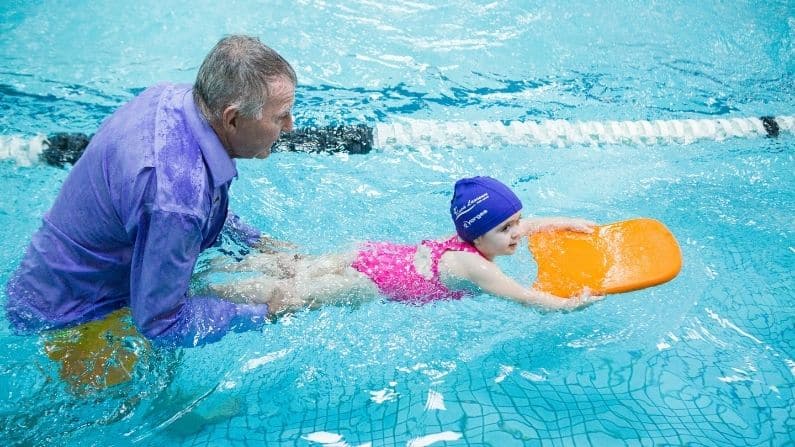
Grouping Children According to their Ability
Grouping will help with the smooth running of the class, and allows the teacher to:
- Give equal attention to all students
- Control a balanced class catering to the students ‘needs
- Plan a lesson that is suitable for all
- Give maximum practice time in the lesson
- Avoid behavioural problems
If there are instances where children need to be moved to a more appropriate class, teachers should be discreet and not create a situation which may be difficult for administration. Speaking with the deck supervisor or administration prior to notifying the parent is always recommended.
The most powerful tool a teacher has in their arsenal is positive reinforcement. Giving genuine praise for attempts and triumphs will keep children interested in the lesson and want them to continue to improve. If a child is struggling with a more difficult skill, ask them to perform something simple that you know they can do and then praise their work. This will help to build confidence and make them willing to try again on a more difficult task.
Parent's Role in Water Familiarisation
Parents must understand the important role they play in helping their child learn to swim. Teachers should encourage parents to take their child to the pool for exploratory play outside of the swimming lesson, but always, under strict supervision.
Exposing children to a variety of different situations and depths of water is crucial for children to learn their capabilities and boundaries. Exploratory learning in particular is vital for frightened beginners. The more exposure children get to the water the more relaxed and confident they will become.
Parents will also see a faster progression for their child if they are given an opportunity to play in the water outside of the lessons and therefore they often perceive the lesson to be more “value” for money. They must become willing partners in their child’s swimming progress.
The Swim School Hub is an online and interactive training program, that has been developed using the philosophies and teaching practices of Laurie Lawrence to benefit swim schools and their teachers. The Hub demonstrates your commitment to continual professional development and ensures school and teacher 5-star ratings are maintained, whilst also meeting all industry compliance requirements.
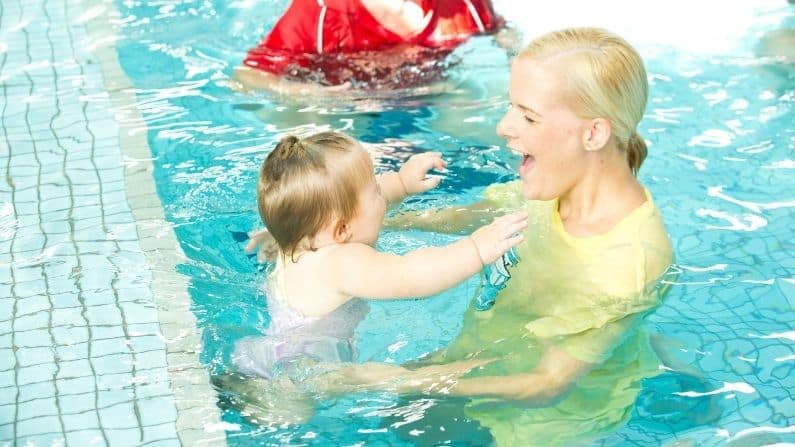
Join our community and keep up to date with new articles, special offers - it is free to join!
Looking for more information on learning how to swim - don't go past the Swim Library.

